Remember when kitchens weren’t designed to be photographed for social media? Back in the 1970s, the heart of the home was a place of bold personality, practical innovations, and sometimes questionable color choices. These weren’t the minimalist, all-white showplaces of today’s home renovation shows – they were vibrant, lived-in spaces where families gathered around melamine tables to eat TV dinners while discussing the latest episode of “All in the Family.” If you grew up during this distinctive decade, walking into today’s kitchens might leave you feeling nostalgic for the quirky yet comfortable cooking spaces of your youth. Let’s take a fond look back at 13 quintessential elements of 1970s kitchens that have largely disappeared from American homes.
1. Avocado Green Appliances
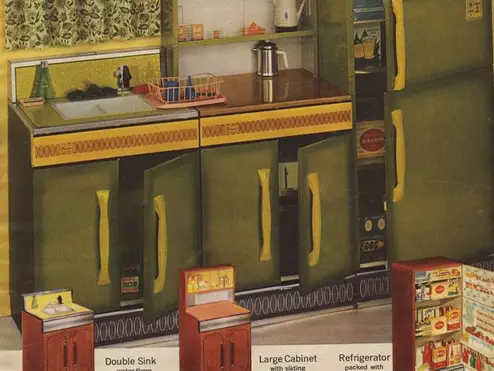
Nothing screams “1970s kitchen” quite like refrigerators, stoves, and dishwashers in that distinctive avocado green shade that dominated the decade. This muted, slightly murky green was everywhere – from major appliances to smaller items like blenders, toasters, and electric can openers. Manufacturers like General Electric, Frigidaire, and Kenmore heavily marketed these colored appliances as fashion statements, convincing homeowners that white appliances were hopelessly outdated and bland. BBC reports that this particular color scheme seems to be enjoying a comeback, and explains the relatable reasons why.
Today’s stainless steel and hidden panel appliances would look positively alien in a 1970s kitchen, where making a bold color statement was essential. The avocado trend was so pervasive that many homes featured complete color coordination, with countertops, backsplashes, and even sinks matching those signature green appliances. While occasionally you’ll spot these retro-colored appliances in vintage-loving homes or hipster apartments, they’ve mostly been relegated to landfills or specialty restoration shops – though it’s worth noting that some companies now offer high-end appliances in green tones, suggesting fashion’s cyclical nature might eventually bring avocado back.
2. Harvest Gold Everything
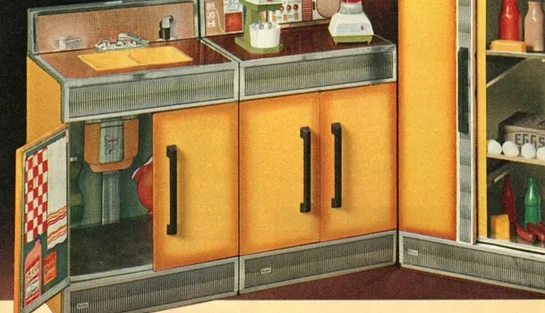
If your kitchen didn’t feature avocado green, chances are it showcased harvest gold – that distinctive yellow-amber shade that served as the decade’s other dominant color choice. This warm, earthy tone covered everything from wall ovens and refrigerators to countertops, curtains, and linoleum flooring. Unlike today’s accent colors, harvest gold wasn’t used as a subtle touch – it was often the primary color scheme for the entire kitchen, creating a warm but somewhat overwhelming amber glow. Cape Cod Times puts an emotional spin on explaining the reasons behind this and other colors’ popularity across the different decades.
Modern kitchens with their cool grays, bright whites, and subtle earth tones bear little resemblance to these golden spaces that defined 1970s domestic life. The all-encompassing nature of harvest gold meant that many kitchens featured matching gold fridges, stoves, wall phones, canisters, and even small appliances – creating a coordinated look that today’s designers would find suffocating but which represented the height of fashion at the time. While some contemporary designers have reintroduced mustard and amber tones as accent colors, the comprehensive harvest gold kitchen has largely vanished from American homes.
3. Fondue Sets
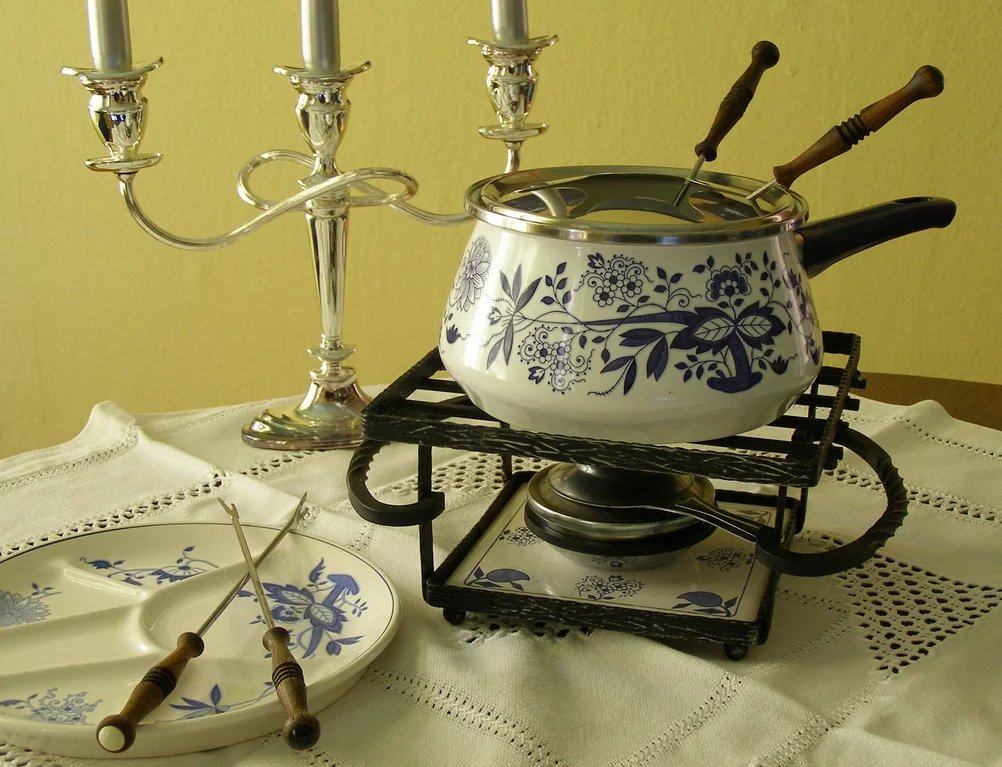
No 1970s kitchen was complete without a fondue set – typically a colorful enameled pot suspended over a small burner, surrounded by long-handled forks with color-coded tips. These sets were considered essential entertainment tools, brought out for dinner parties where guests would gather around to dip bread cubes into bubbling cheese, or marshmallows and fruit into chocolate. Fondue became so popular that many homes had multiple sets, including specialized models for different types of fondue preparations. Paste Magazine takes a big bite out of this trend’s history and puts into perspective just how far it’s come, literally.
While occasional fondue revivals have occurred, the prominent place these sets once held in kitchen cabinets and countertops has disappeared. Unlike the 1970s, when a fondue set was considered a wedding registry essential and a mark of sophisticated entertaining, today they’re novelty items often gathering dust after a single use. The communal dining experience fondue represented – with everyone gathering around a shared pot – reflected the more relaxed, interactive entertainment style of the decade, before formal dining made a comeback in the status-conscious 1980s.
4. Wooden Duck Collections
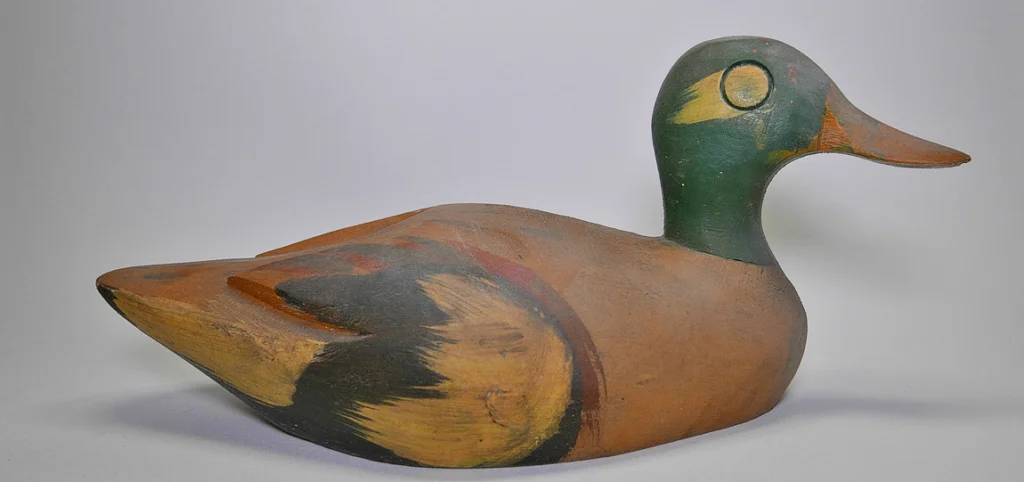
Decorative wooden ducks – whether hanging on walls, perched on shelves, or formed into napkin holders and canisters – were mysteriously ubiquitous in 1970s kitchens. These rustic avian decorations came in various sizes and poses, from flying formations to placid sitting ducks, often hand-carved or mass-produced with a deliberately handcrafted look. Frequently accompanied by other country-style decorations like copper molds and gingham accents, these wooden waterfowl were considered charming kitchen décor essentials.
Today’s kitchen decorating trends favor either minimalist approaches or personalized collections with particular meaning to the homeowner – making the widespread duck phenomenon of the 1970s especially puzzling in retrospect. The country kitchen aesthetic that dominated the decade created odd juxtapositions of rustic elements with modern appliances and synthetic materials. While some elements of country décor have experienced revivals, the wooden duck collections that once watched over mealtimes have migrated permanently from most American kitchens, now occasionally spotted only in thrift stores or nostalgic retro diners.
5. Electric Carving Knives
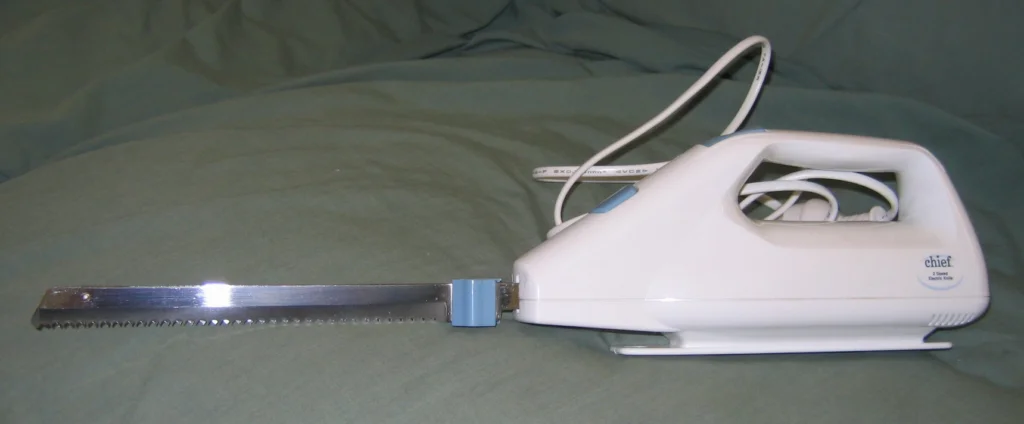
The electric carving knife – with its twin serrated blades that moved in opposite directions – was considered an essential tool in 1970s kitchens, prominently displayed or stored in its original box for special occasions. These noisy gadgets were brought out with great ceremony for Sunday roasts, Thanksgiving turkeys, or whenever someone wanted to create perfectly thin, even slices of meat or bread. Gift registries and holiday wish lists invariably included these specialized appliances, often from brands like Hamilton Beach or General Electric.
Modern kitchens typically feature high-quality chef’s knives or food processors instead, with the specialized electric carving knife now seeming like an unnecessary unitasker taking up valuable drawer space. The dramatic presentation of the electric knife – often wielded by the household patriarch with exaggerated care – was part of the decade’s food theater, an element of dinner preparation that doubled as entertainment. While you can still purchase electric knives today, they’re rarely considered essential tools, having been replaced by more versatile gadgets or simply better manual knives in contemporary kitchens.
6. Mushroom Canister Sets
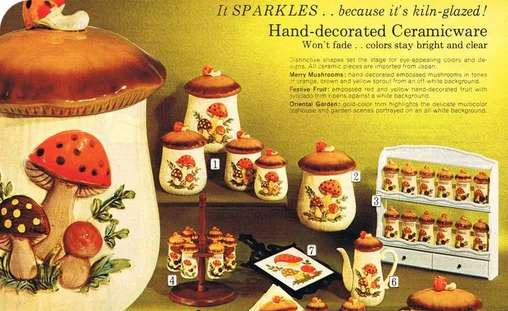
Ceramic canister sets featuring mushroom designs – with stems forming handles on dome-shaped lids – were standard storage solutions in countless 1970s kitchens. These sets typically came in graduated sizes for flour, sugar, coffee, and tea, painted in earthy colors like brown, orange, and off-white to complement the decade’s natural color palette. The mushroom motif extended beyond canisters to wall clocks, trivets, napkin holders, and salt and pepper shakers, creating thematic kitchen collections.
Today’s kitchen storage tends toward clean lines and transparent containers that display contents, making the whimsical fungi designs look hopelessly dated. The mushroom trend reflected the decade’s broader embrace of natural elements and earthy aesthetics, influenced by the environmental movement and back-to-nature counterculture. While some collectors now seek these vintage pieces, they’ve largely disappeared from everyday kitchens, replaced by more practical and visually subtle storage options that blend into contemporary design rather than serving as decorative focal points.
7. Coppertone Finishes
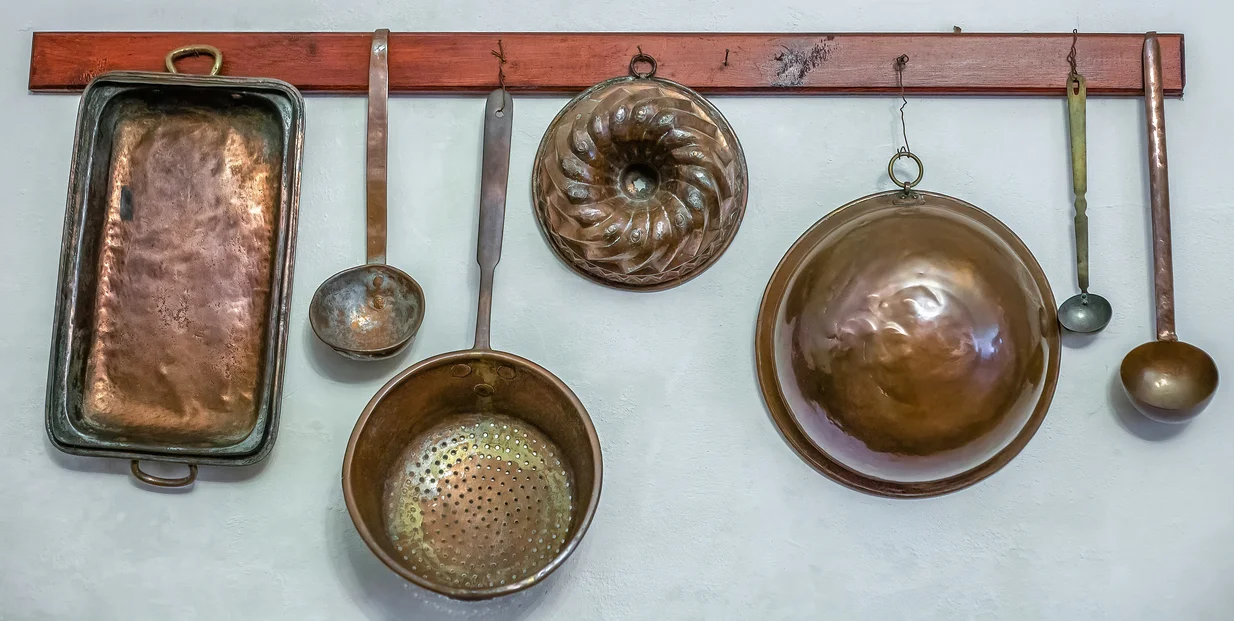
Copper and copper-colored elements – from actual copper-bottomed Revere Ware pots to faux copper finishes on range hoods, light fixtures, and small appliances – added metallic warmth to 1970s kitchens. Copper molds designed to hang on walls (whether actually used for cooking or purely decorative) formed geometric patterns above stoves, while copper-finished cabinet hardware and light fixtures gleamed against dark wood cabinetry. The warm, reddish-brown tones complemented the decade’s earth-toned color schemes perfectly.
While copper has made occasional comebacks as an accent material, the comprehensive Coppertone look of the 1970s kitchen has vanished. Modern kitchens might incorporate copper in small doses – perhaps a statement pot or pendant light – but the coordinated copper elements that once defined kitchen aesthetics have been replaced by stainless steel, brushed nickel, or matte black finishes. The tarnish-prone nature of real copper and the dated appearance of copper-colored plastics and laminates have relegated this once-popular finish to vintage kitchen territory.
8. Lazy Susans
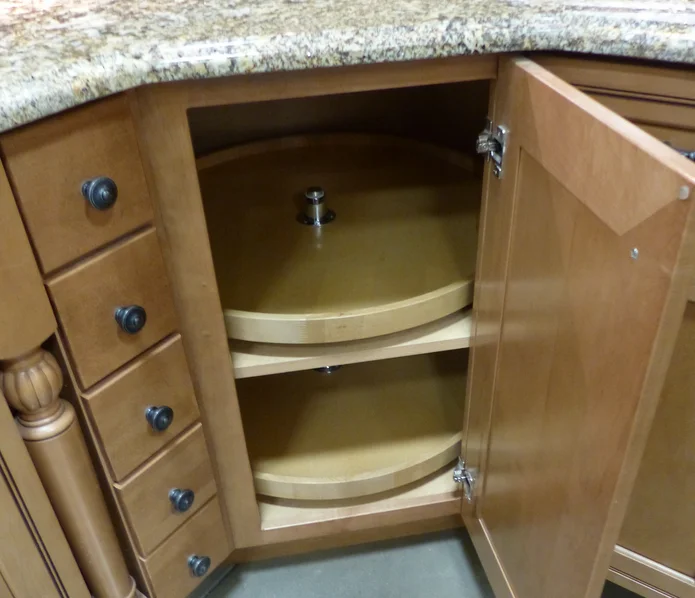
The revolving Lazy Susan – whether built into corner cabinets, placed on dining tables, or featured as freestanding countertop storage – was an innovation that promised to solve accessibility problems in kitchens. These spinning platforms came in various materials including plastic, wood, and metal, often featuring divided sections for condiments, spices, or snacks. Cabinet-mounted versions were particularly prized features in 1970s kitchen remodels, marketed as modern space-saving solutions for corner storage dilemmas.
Although some corner cabinets still incorporate rotating shelves, the ubiquitous tabletop Lazy Susan has largely disappeared from American kitchens. Contemporary space-saving solutions favor drawer organizers, pull-out shelving, and more ergonomic storage options rather than the spinning platforms that frequently resulted in condiment collisions and spills. The decline of formal dining and family-style meals has also diminished the need for the communal rotating centerpiece that once proudly displayed salad dressings, pickles, and relishes at the 1970s dinner table.
9. Linoleum Flooring with Bold Patterns
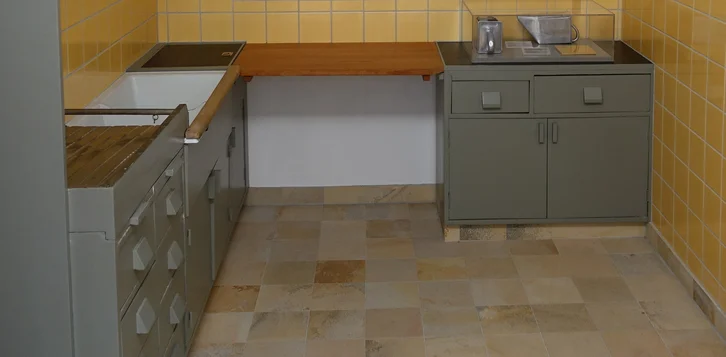
Linoleum floors featuring geometric patterns, faux brick designs, or stylized floral motifs in high-contrast colors were standard in 1970s kitchens. These resilient sheet floors offered practical benefits – easy cleaning, water resistance, and comfort underfoot – while adding visual interest through bold patterns often incorporating the decade’s signature colors like orange, brown, and gold. Many featured “self-adhesive” installation, allowing homeowners to undertake kitchen updates without professional help.
Today’s kitchen flooring preferences have shifted dramatically toward wood, tile, and luxury vinyl planks that simulate natural materials rather than embracing their synthetic nature with bold patterns. The unmistakable look of 1970s linoleum – with its often dizzying geometric designs and high-gloss finish – has been replaced by more subtle flooring options that aim to recede visually rather than make a statement. While quality linoleum is actually experiencing a small comeback for its environmental benefits, the distinctive patterns that characterized 1970s installations remain firmly in the past.
10. Macramé Plant Hangers
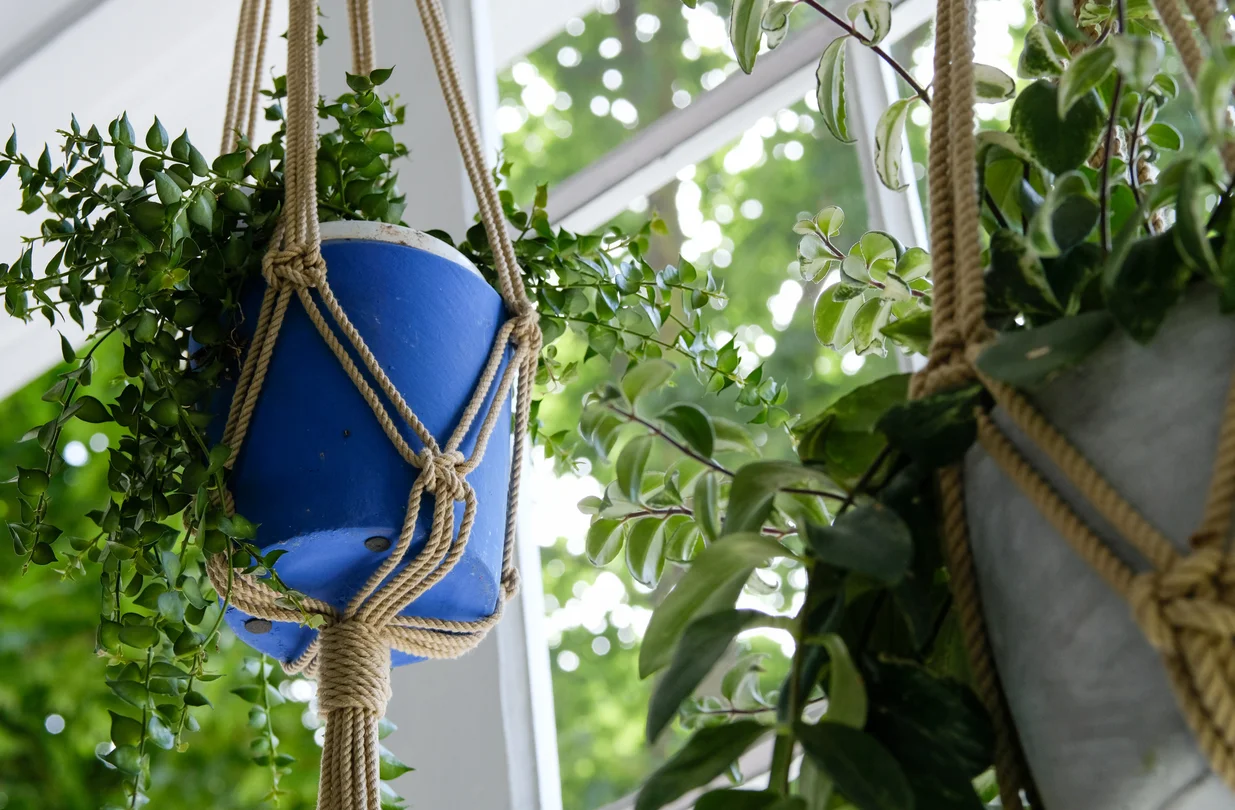
Handcrafted macramé plant hangers suspending spider plants, philodendrons, and Swedish ivy were essential elements in 1970s kitchens, hanging near windows or in breakfast nooks. These intricate knotted creations – often made by household members or purchased at craft fairs – displayed the decade’s enthusiasm for handicrafts and indoor gardening. Their natural fibers and organic forms perfectly complemented the era’s earth-toned color schemes and environmental consciousness.
While houseplants have made a major comeback in contemporary interior design, the elaborate macramé holders that once displayed them have largely been replaced by simple ceramic pots or minimalist hanging planters. The complex, sometimes dusty textile creations that gathered cookspace moisture and occasionally supported generations of spider plants have disappeared from modern kitchens, where cleaner lines and easier-to-sanitize surfaces are preferred. Though macramé has experienced some revival among craft enthusiasts, its dominant presence in kitchen décor remains a distinctly 1970s phenomenon.
11. Wooden Cabinet Façades
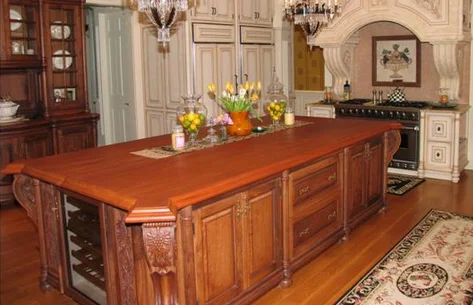
Dark wooden cabinets – often with ornate detailing, visible grain patterns, and heavy varnish finishes – dominated 1970s kitchen design. These substantial storage units featured distinctive styling elements like recessed panels, cathedral arches, or decorative trim that emphasized their solid construction and traditional craftsmanship. Frequently stained in dark walnut or oak tones, these cabinets created a weighty, sometimes somber atmosphere that contrasted with the decade’s otherwise playful design elements.
The bright, light kitchens favored today – with white or light-colored cabinetry creating an airy, open feeling – stand in stark contrast to the woody enclosures of 1970s cooking spaces. Contemporary kitchen design emphasizes reflective surfaces, hidden hardware, and streamlined profiles rather than the heavily detailed, visually dominant cabinetry of the past. The substantial wooden cabinet fronts that anchored 1970s kitchens have largely been removed, painted over, or replaced entirely in kitchen renovations, with their dark, enclosing presence considered the antithesis of modern design principles.
12. Pop-Up Toaster Covers
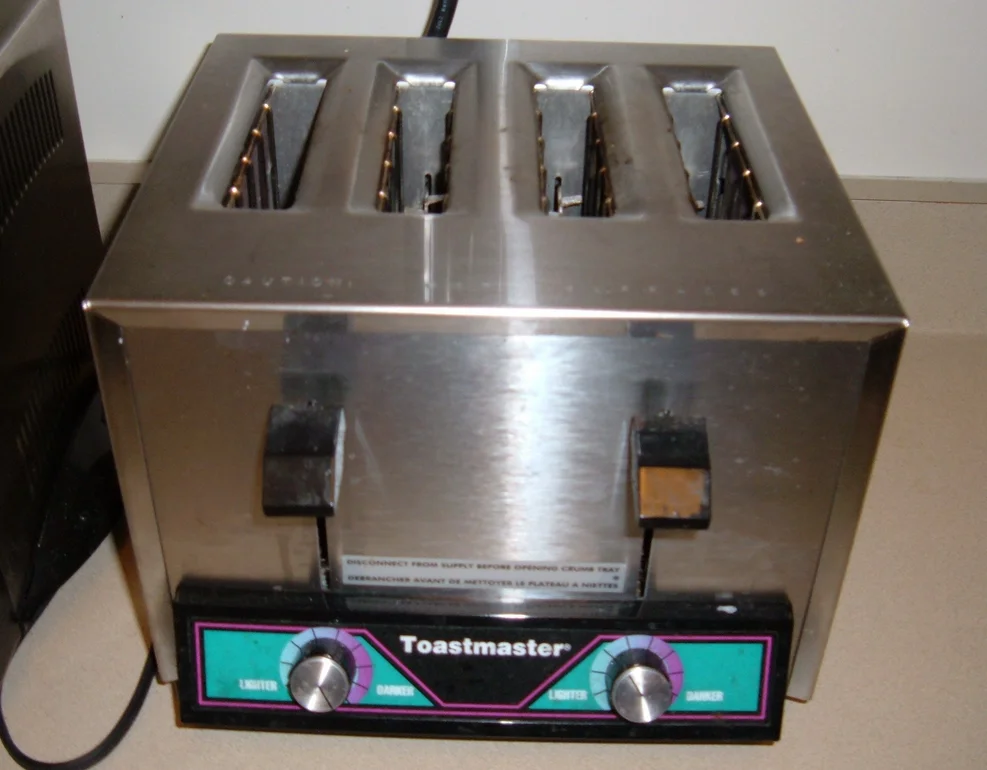
Fabric or plastic appliance covers – particularly for toasters – were considered essential for keeping kitchens tidy in the 1970s. These decorative covers, often handmade with quilted fabrics or purchased in coordinating kitchen colors, concealed appliances when not in use, creating a cleaner countertop appearance according to the standards of the time. Some featured embroidered designs or appliqués that coordinated with kitchen curtains or dish towels, adding to the room’s cohesive decorating scheme.
Today’s design aesthetic either showcases high-end appliances as status symbols or conceals them entirely within cabinetry – the middle ground of decoratively covering visible appliances has disappeared completely. Modern kitchens typically feature either countertop clearing (with appliances stored in cabinets) or careful curation of visually appealing devices meant to be displayed, rather than the 1970s compromise of keeping appliances accessible but disguised. The handcrafted toaster cozies that once demonstrated homemaking skills now seem quaintly unnecessary in contemporary kitchen design.
13. Conversation Pits
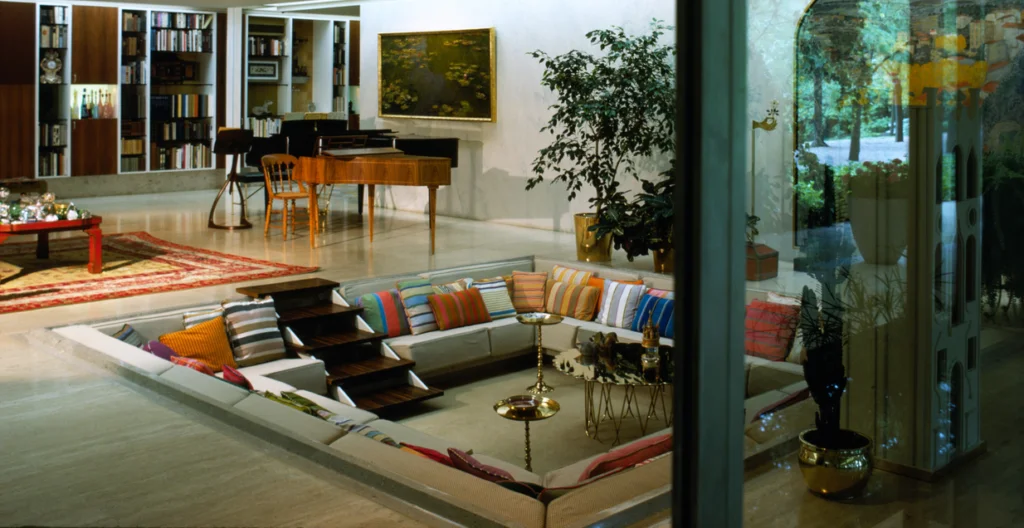
While not restricted to kitchens, the conversation pit or sunken seating area adjacent to many 1970s kitchens created distinctive multi-level cooking and dining spaces. These architectural features – typically a few steps down from the main kitchen area and often featuring built-in bench seating with vibrant cushions – were designed to encourage relaxed gathering and conversation while meals were prepared. Their casual, communal design reflected the decade’s emphasis on informal entertaining and family togetherness.
Open concept kitchens have replaced these deliberately separated but connected spaces, eliminating the physical and symbolic boundaries between cooking and socializing zones. The distinctive step-down design that created defined activity areas has been flattened in modern homes, with kitchen islands now serving as gathering spaces within the cooking area rather than adjacent to it. The conversation pit’s combination of intimacy and separation has vanished from contemporary floor plans, which prioritize uninterrupted sight lines and level surfaces throughout living spaces.
While contemporary design values minimalism, coherence, and timelessness, the 1970s embraced individual expression, vibrant color, and of-the-moment trends with an enthusiasm that’s both charming and perplexing in retrospect. Perhaps that’s why so many of us look back fondly on those mushroom-canistered, copper-accented kitchens – not because they were objectively beautiful by today’s standards, but because they represented a time when kitchens were designed for living rather than for showing, when practicality often trumped aesthetics, and when personality mattered more than perfection in creating spaces where families gathered to share meals and memories alike.


